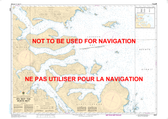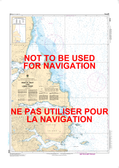 Loading... Please wait...
Loading... Please wait...Currency Displayed in
- Home
- Books
- Books Historical
- George Augustus Selwyn
Categories
George Augustus Selwyn
Product Description
Gyan Books in India reproduce many books now out of print with an expired copyright. This saves the trouble of looking for a used copy sometimes at a high price.
Printed 1860 approx
George Augustus Selwyn (5 April 1809 – 11 April 1878) was the first Anglican Bishop of New Zealand. He was Bishop of New Zealand (which included Melanesia) from 1841 to 1869. His diocese was then subdivided and Selwyn was Metropolitan (later called Primate) of New Zealand from 1858 to 1868. Returning to Britain, Selwyn served as Bishop of Lichfield from 1868 to 1878.[1]
After his death, Selwyn College, Cambridge was founded to honour his life and contribution to scholarship and religion. The college and other educational facilities uphold the legacy of the bishop.
Selwyn was educated at Eton and St. John’s College, Cambridge. In 1833 he was ordained a deacon and became a curate at Windsor.
He was made bishop of New Zealand in 1841. He learned to preach in Maori and to sail his own vessel among the islands that were included in his diocese. He organized the Anglican Church in New Zealand and consecrated four additional bishops there. During the Maori unrest of the 1850s and 1860s, he was suspect to Maoris as an Englishman and to settlers as a native sympathizer but later won wide respect. He became bishop of Lichfield in 1868. Selwyn College, Cambridge, was named for him.
George Augustus Selwyn was born on 5 April 1809 at Hampstead, England, the second son of William Selwyn, a noted constitutional lawyer, and his wife, Laetitia Frances Kynaston. His education began at a preparatory school at Ealing, where J. H. Newman, the future cardinal, was a fellow pupil, and continued at Eton College, where he earned praise both as a student and as an athlete. He was a strong swimmer and an expert oarsman, later representing Cambridge University in the inaugural Oxford–Cambridge boat race in 1829. At Eton began his lifelong friendship with William Ewart Gladstone and others who were later to be influential promoters of his cause in both New Zealand and Melanesia. He entered St John's College, Cambridge, in 1827, where he studied Classics, coming second in the Classical tripos in 1831. He graduated BA in that year, MA in 1834, and was elected a fellow of his college, a distinction shared with William Martin and Thomas Whytehead, both of whom came to New Zealand through his influence.
On leaving Cambridge, George Selwyn took an assistant master's position at Eton, together with a private tutorship for the sons of Lord Powis. During this time, possibly influenced by H. J. C. Harper (the future bishop of Christchurch), he made the decision to enter the ordained ministry, although aware, in his own words, that among the professions 'this will in future be the most laborious and the least lucrative'. He was ordained deacon on Trinity Sunday 1833, and priest exactly a year later, in St George's, Hanover Square. While at Eton he became part-time curate to Boveney parish, and then Windsor, where his energetic ministry attracted attention, including that of Prince Albert. On 25 June 1839 at the church of St Giles in the Fields, London, he married Sarah Harriet Richardson, whose father, Sir John Richardson, was a judge in the Court of Common Pleas.
When the archbishop of Canterbury, William Howley, sought to make an appointment to the newly created bishopric of New Zealand, the post was offered to Canon William Selwyn, George's elder brother, who declined. Within the week Selwyn himself was offered the appointment and promptly accepted. On 17 October 1841 he was consecrated bishop of New Zealand at Lambeth Palace Chapel by the archbishop of Canterbury and the bishops of London, Lincoln and Barbados. Both his own university and Oxford conferred on him the degree of Doctor of Divinity.
Selwyn arrived in Auckland, New Zealand, on 30 May 1842 aboard the brig Bristolian, while the Tomatin, on which his party had embarked in England, proceeded more slowly from Sydney, New South Wales, with Sarah Selwyn and a number of clergy. Selwyn's prodigious energy and all-round accomplishments impressed both Māori (whose language he had begun to learn on the passage out) and settler. His first visitation tour began only 10 days after his arrival at the Bay of Islands. It took six months, covering about 2,300 miles, one third of which he walked, travelling the balance by ship, horseback, boat and canoe. He became a competent mariner, mastered the art of navigation, and in his small schooner, the Undine, undertook coastal passages in ill-charted waters, as well as ocean voyages to Melanesia. One sailor commented that 'to see the Bishop handle a boat was almost enough to make a man a Christian'. However, he was much more than the legendary muscular Christian. He was a high-principled idealist as well as a far-sighted man of action, a combination which was experienced by some as inflexibility rather than resolution.








